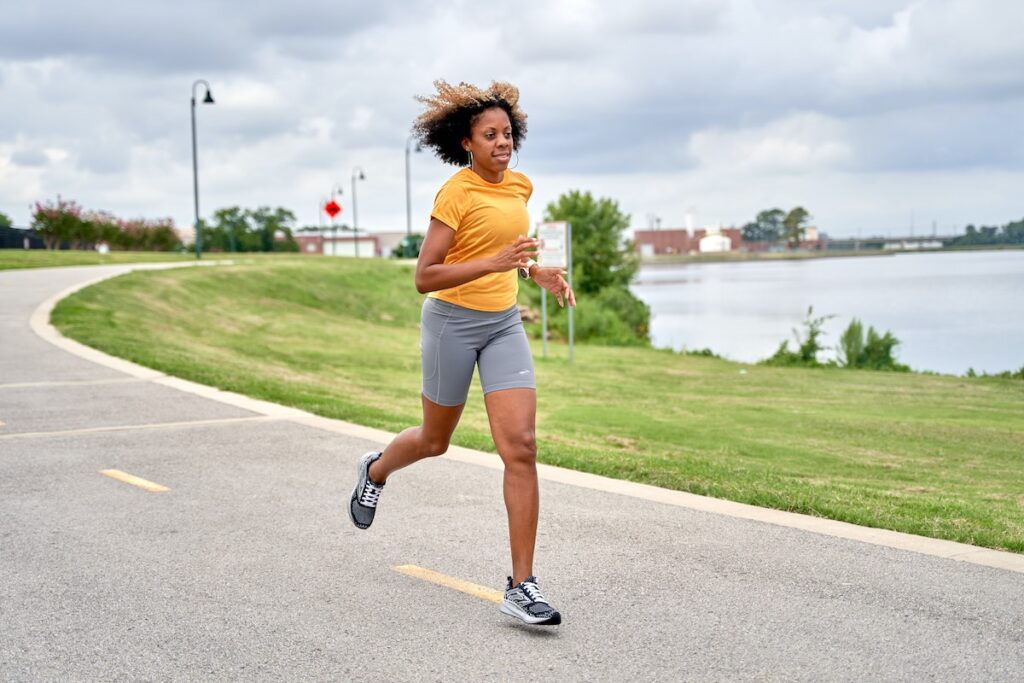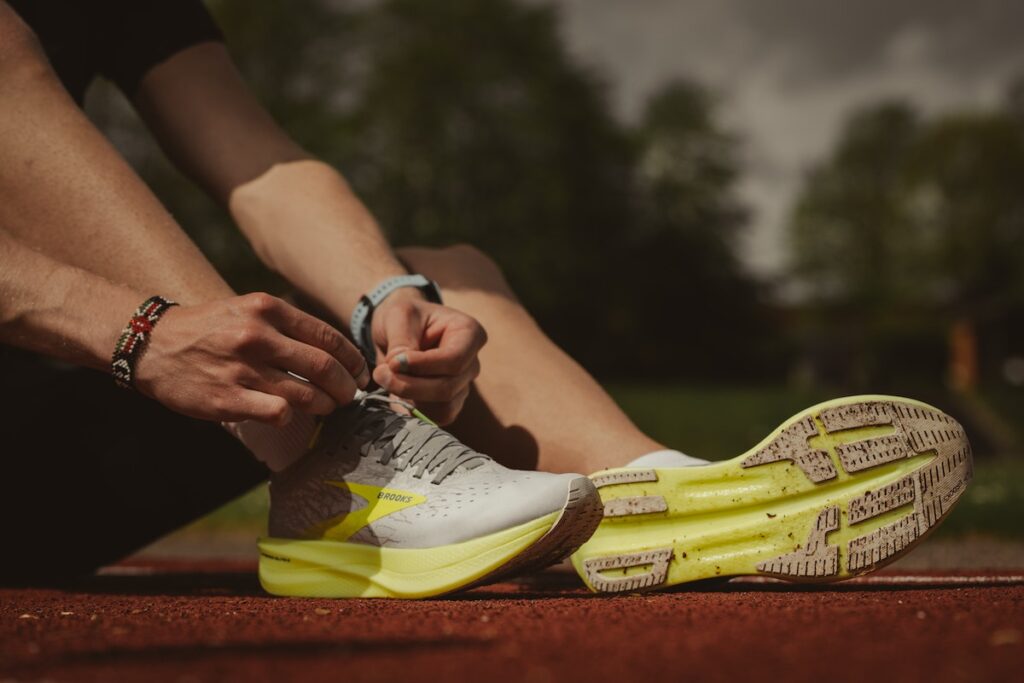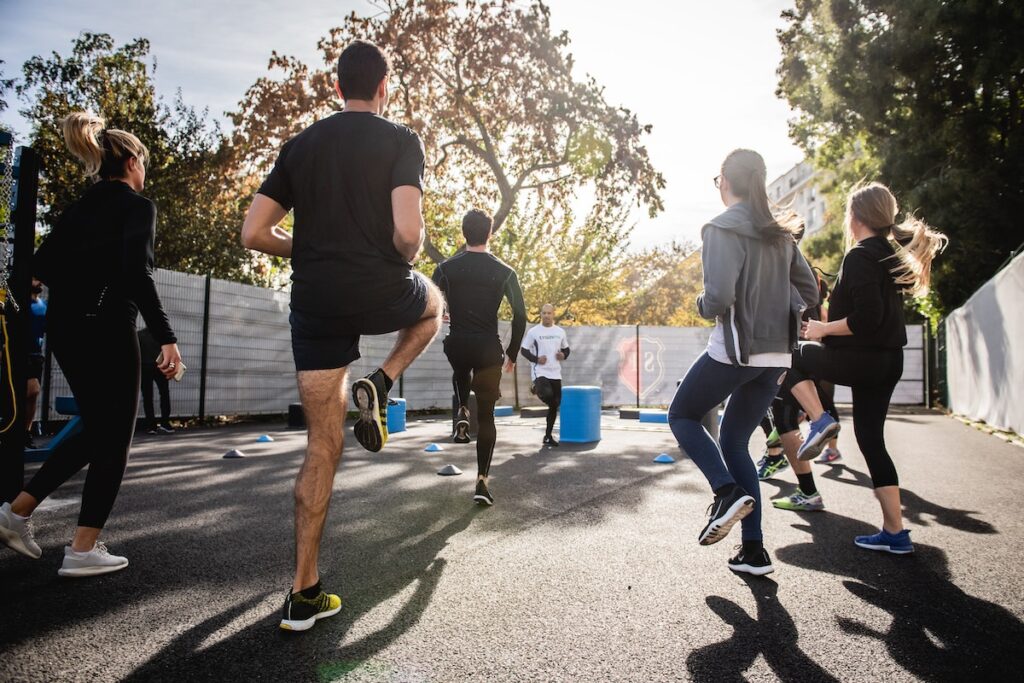
You probably already heard many times that exercise is good for your physical and mental health, indeed the benefits for our mental well-being have been explored widely in recent years (e.g. see this blog). What’s more, exercising is good for people who suffer from severe mental health difficulties, such as major depression. Evidence shows that aerobic exercise can be as effective as taking antidepressants or going to therapy (Babyak et al., 2000). But why is that?
Reward and cognitive control may be two relevant neural indicators when treating depression through exercise. Research has revealed that people with depression may present with a lower response to rewards, i.e. alterations in the way they process rewards (Keren et al., 2018). Studies also found that people with depressive symptoms reported a number of cognitive difficulties, including the ability to focus and to make decisions (McClintock et al., 2011), which are associated with poor treatment response (Roiser et al., 2012).
However, the current evidence has not yet reached a consensus with regards to the actual role of these processes in depression. Moreover, because exercise is not effective in the same way for everyone, it is important to understand who can benefit the most from it.
A study conducted by Brush and colleagues (2020) hypothesised that: 1) aerobic exercise would contribute to a substantial reduction in depressive symptoms; 2) and reward and cognitive control would increase following the treatment, and that this increase would be associated with a decrease in depressive symptomatology.

Aerobic exercise can help improve depressive symptoms, but such an effect might be the result of other processes such as reward and cognitive control.
Methods
Students were eligible post participating in this research if they had a current diagnosis of major depression and if they did not exercise regularly. They also had to be physically healthy, have no past or present mental health symptoms besides depression and anxiety, and not be treated with medications other than antidepressants.
Participants were randomised into two treatment groups: moderate-intensity aerobic exercise (45 minutes of cardio), or the comparator (30-45 minutes of light stretching), which were supervised and held three times per week for eight weeks.
The measures used included a general health history questionnaire; the MINI structured interview for psychiatric diagnoses; the Beck Depression Inventory-II for depression (at different time-points) and the Beck Anxiety Inventory for anxiety; and a modified Bruce protocol for cardiovascular fitness.
Participants were also assessed using two EEG tasks: 1) the doors task, where they had an equal chance to win or lose money; 2) and the flankers task, where no money was involved but participants were required to respond as fast and as accurately as possible.
Finally, event-related potentials (ERPs) were measured to assess reward processing and cognitive control, which were treated, respectively, as reward positivity (ERP to gains minus ERP to losses), and error-related negativity (ERP to errors minus ERP to correct trials).
The sample size required was identified with an a priori power analysis. Statistical analyses were conducted using SPSS and R software and included:
- Baseline chi-square tests, correlations, independent samples t-tests;
- Treatment Group X Time mixed analyses of variance to assess intervention effects;
- Treatment Group X Time multilevel modelling for within-subject change in depressive symptomatology to assess the moderation effect of reward and cognitive control;
- Logistic regression analysis to assess the independent variables: treatment response (0 = non-responder, 1 = responder where decrease in depression is ≥50%); baseline reward and cognitive control; treatment group (0 = stretching, 1 = aerobic exercise); cardiorespiratory fitness.
Results
Following a drop-out of 15 participants, a total of 66 students took part in the study. In the sample, 25 people responded to the treatment and 41 did not, with no significant differences in either treatment group. Initial associations between depressive symptoms and anxiety symptoms, and with smaller ERP were found. Also, there was a small increase in cardiovascular fitness in both treatment groups.
While a decrease in depressive symptoms severity was observed in both treatments, this was even more evident for aerobic exercise at the end of the eight weeks (b –2.89, p<0.001, 95% CI –3.49 to –2.28, vs stretching b –1.65, p<0.001, 95% CI –2.29 to –1.02). Moreover, increased baseline depressive symptoms predicted successful treatment response to aerobic exercise (OR 1.18, p 0.024, 95% CI 1.02 to 1.36).
Interestingly, it was shown that students with increased reward positivity at baseline were more likely to experience an improvement in their symptoms following aerobic exercise (OR 1.45, p 0.037, 95% CI 1.02 to 2.05) compared to stretching (p>0.05). However, this was not the case for cognitive control. Moreover, aerobic exercise failed at modifying reward and cognitive control over time. Finally, it was found that neither reward nor cognitive control was successful at moderating a decrease in depressive symptomatology.

It was found that reward processing, but not cognitive control, predicts better treatment outcomes for depressive symptoms.
Conclusions
The authors concluded that, in the context of university students with major depression, displaying a larger reward positivity before receiving the treatment predicts a better response to aerobic exercise.

Aerobic exercise is more successful in reducing depressive symptoms in people with larger reward positivity.
Strengths and limitations
This is a robust, well-conducted study that used a randomised design where the effectiveness of two treatments is assessed and the causal effect can be estimated. Moreover, most decisions made by the authors are backed-up by relevant literature, and biases introduced by the number of people dropping out from the study are considered.
Nonetheless, the authors reported some limitations. First, they expressed concerns with regards to light-intensity stretching. While they do recommend that future studies focus on more traditional treatments for depression, such as medication, it might also be interesting to compare different kinds of exercises or sports and the role of reward in the reduction of depressive symptoms. Second, the authors mentioned that the length of the treatment, if too short, might not influence reward and cognitive control. However, they also made an interesting point by saying that these processes might be more easily changeable in childhood rather than in adulthood, meaning that longer interventions might be required later in life. Third, due to the lack of follow-up assessments, they could not examine whether the reduction in depressive symptoms is sustained over time. Finally, despite the study referring to the population analysed as general adults, it should be pointed out that the recruited sample comprised university students only, thus hindering the generalisability of the results to other populations. More attention should be put into making sure that the type of sample used is evident throughout the study, and other research seeking to replicate the results should try to do so using a range of different people.

The study design provides robustness to the findings, but the length of exercise included may have played a role in reward and cognitive control activation.
Implications for practice
Exercising has tremendous benefits not only for our physical health, but also for our mental well-being, and should be incorporated into our lives as much as possible. Therefore, studies like this one, which provide further evidence also in terms of alleviating mental health symptoms, are especially needed. The added value is that this study focuses on the processes that are implicated in successful treatment response, which can have important clinical implications. For example, because people with a diagnosis of major depression, yet with functional reward processing, seem to find the treatment more effective than people whose way to process rewards is blunted, it may be possible to predict who would benefit the most from a certain intervention. However, as the authors pointed out, these underlying mechanisms might have different relevance to the outcome of the treatment depending on the age of the participants, as some traits or processes could be more malleable at a young age but more difficult to change in adulthood. It is crucial that more studies try to identify and understand the mechanisms that may play an important role in the effectiveness of these interventions by considering all these variables in order to promote the development of tailored treatments for specific subgroups of people.

By understanding reward processing involved in depression, it may be possible to identify the people who will benefit the most from exercise-based interventions.
Statement of interests
None.
Links
Primary paper
Brush CJ, Hajcak G, Bocchine AJ, Ude AA, Muniz KM, Foti D, Alderman BL. A randomized trial of aerobic exercise for major depression: examining neural indicators of reward and cognitive control as predictors and treatment targets (PDF). Psychological Medicine. 2020 Aug 24:1-1.
Other references
Nedoma R., Exercise can help reduce depressive symptoms in people who are not clinically depressed. The Mental Elf, 16 July 2021. https://www.nationalelfservice.net/treatment/exercise/exercise-depressive-symptoms/
Babyak M, Blumenthal JA, Herman S, Khatri P, Doraiswamy M, Moore K, Craighead WE, Baldewicz TT, Krishnan KR. Exercise Treatment for Major Depression: Maintenance of Therapeutic Benefit at 10 Months. Psychosomatic medicine. 2000 Sep 1;62(5):633-8.
Keren H, O’Callaghan G, Vidal-Ribas P, Buzzell GA, Brotman MA, Leibenluft E, Pan PM, Meffert L, Kaiser A, Wolke S, Pine DS. Reward Processing in Depression: A Conceptual and Meta-Analytic Review Across fMRI and EEG Studies (PDF). American Journal of Psychiatry. 2018 Nov 1;175(11):1111-20.
McClintock SM, Husain MM, Wisniewski SR, Nierenberg AA, Stewart JW, Trivedi MH, Cook I, Morris D, Warden D, Rush AJ. Residual Symptoms in Depressed Outpatients Who Respond by 50% But Do Not Remit to Antidepressant Medication (PDF). Journal of clinical psychopharmacology. 2011 Apr;31(2):180.
Roiser JP, Elliott R, Sahakian BJ. Cognitive Mechanisms of Treatment in Depression (PDF).Cognitive mechanisms of treatment in depression. Neuropsychopharmacology. 2012 Jan;37(1):117-36.
Read all our blogs about exercise and depression.
Photo credits
- Photo by Malik Skydsgaard on Unsplash
- Photo by SwapnIl Dwivedi on Unsplash
- Photo by Jeremy Stewart on Unsplash
- Photo by Gabin Vallet on Unsplash
- Photo by Anton Maksimov 5642.su on Unsplash
